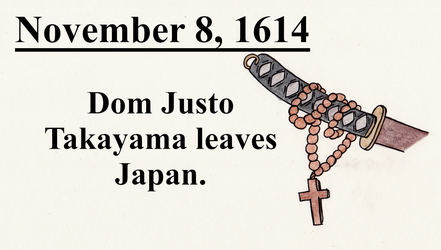Sign In
CloseOn November 15, 1864, General William Tecumseh Sherman begins his March to the Sea during the American Civil War. The March to the Sea was a bold idea to build upon the Union's victory in capturing the city of Atlanta, Georgia, by launching a campaign that would cripple the Confederacy's war effort. Sherman's plan was a risky one that would require his army of ~60K men to operate behind enemy lines with no supply train and instead relying on what could be foraged along the way, leading many (including President Abraham Lincoln) to initially oppose the plan. However, Union leadership eventually gave Sherman permission to carry out his planned campaign, viewing the possibility to end the war much sooner outweighing the risks. On November 15, Sherman's Army of the Tennessee and Army of Georgia departed from Atlanta and began their march towards the city of Savannah. Along the way, Sherman's armies destroyed railroads, bridges, crops, telegraph lines, food stores, and any other resources and infrastructure which could be utilized by the Confederates for the war while also fighting forces of the Confederate States Army.
On December 10, Sherman's forces reached the outskirts of the city of Savannah. However, the Confederate defenders had entrenched themselves in the defense of the city and had also flooded the surrounding rice fields in order to impede the Union advance. While this initially prevented Sherman from connecting with the Union Navy as per his original intentions, Sherman ordered a force to take nearby Fort McAllister and was thus able to connect with the Union as well as bring in siege artillery on December 13. On December 17, General Sherman sent an ultimatum to the commander of the Confederate forces in the city stating that gentler treatment of the city would be made if surrender was given immediately; otherwise, Sherman would be forced to use the harshest measures he had available and could not promise any protection of the city nor its people. Rather than surrender, the Confederate forces retreated from the city on December 20. In the wake of the CSA's abandonment of Savannah, a delegation led by the Savannah's mayor offered to surrender the city peacefully if the Union forces promised to protect the citizens of the city and their property. The offer was accepted and Savannah fell to the Union on December 21, completing Sherman's March to the Sea.
The campaign devastated the Southern economy and war effort, inflicting what General Sherman estimated to be $100 million in damages (~$1.4 billion today). Over 300 miles of railroad had been destroyed, thousands of mules and horses as well as 13,000 head of cattle had been seized, 9.5 million pounds of corn and 10.5 million pounds of fodder confiscated, and numerous cotton gins and mills destroyed. The March to the Sea had successfully disrupted the Confederacy's defense. Meanwhile, Sherman continued marching north through the Carolinas in a bid to regroup with General Ulysses S. Grant, eventually accepting the surrender of Confederate General Joseph E. Johnston.
Submission Information
- Views:
- 216
- Comments:
- 0
- Favorites:
- 1
- Rating:
- General
- Category:
- Visual / Traditional




